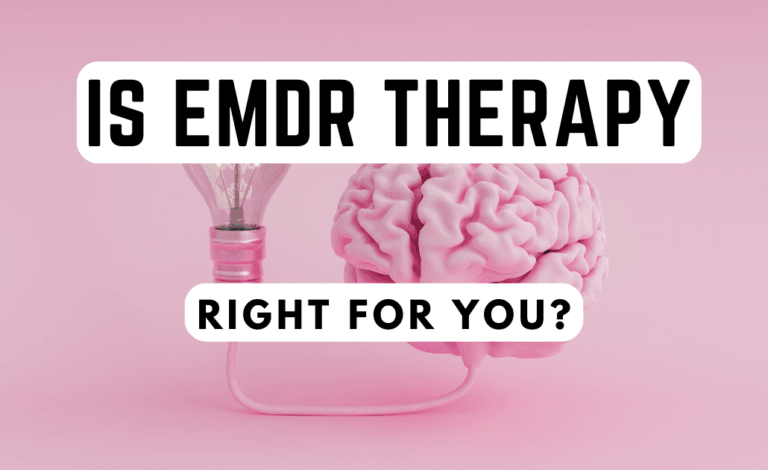The Amygdala'S Role in Psychological Trauma - 6 Ways It Works on Your Behalf
The amygdala is a crucial part of the brain involved in processing emotions and responses, especially fear and threat detection. It plays a significant role in our emotional and psychological well-being.
Table of Contents
What is the Amygdala?
The amygdala is a small, almond-shaped cluster of nuclei located deep within the temporal lobes of the brain, one on each side. It is a key component of the brain’s limbic system, which is responsible for emotions, memory, and certain aspects of behavior. The amygdala plays a crucial role in processing and regulating emotions, particularly those related to fear and threat detection.
Here are some general points about the amygdala:
Emotion Processing: The primary function of the amygdala is the processing of emotions, especially fear and anxiety. It helps to assess the emotional significance of sensory stimuli and determines whether they are potentially threatening or rewarding. This quick assessment allows for rapid reactions to potential dangers.
Fear Response: The amygdala is central to the brain’s fear response. When it detects a potential threat, it triggers a cascade of physiological responses, including increased heart rate, heightened alertness, and the release of stress hormones like cortisol. This rapid response is often referred to as the “fight or flight” reaction.
Learning and Memory: The amygdala is involved in learning and memory, especially when emotions are a significant aspect of the experience. It helps consolidate memories of emotionally charged events and experiences, making them more likely to be remembered.
Social and Emotional Significance: Beyond fear, the amygdala also processes other emotions and social cues. It helps us recognize and interpret facial expressions, body language, and other nonverbal signals from others. This is crucial for understanding social interactions and relationships.
Stress and Trauma: The amygdala is implicated in the body’s stress response. Chronic stress or traumatic experiences can lead to changes in the amygdala’s structure and function, potentially contributing to anxiety disorders, post-traumatic stress disorder (PTSD), and other mental health issues.
Modulation by Prefrontal Cortex: The amygdala’s responses are regulated and modulated by the prefrontal cortex, the part of the brain responsible for higher-order thinking and decision-making. This regulation helps to contextualize and evaluate emotional responses.
Neuroplasticity: The amygdala is capable of neuroplasticity, which means it can undergo structural and functional changes in response to experiences and learning. This plasticity allows the amygdala to adapt to new situations and environments.
Disorders and Abnormalities: Dysregulation of the amygdala has been associated with various mental health disorders, including anxiety disorders, depression, PTSD, and certain phobias. Additionally, abnormalities in the amygdala’s structure or function have been observed in individuals with conditions like autism spectrum disorder.
- Therapeutic Interventions: Given its role in emotional processing and regulation, the amygdala is often a target of therapeutic interventions for emotional disorders. Techniques like cognitive-behavioral therapy (CBT) and exposure therapy aim to modulate amygdala responses to reduce anxiety and fear.
Understanding the amygdala’s functions and its role in emotional processing provides insights into how the brain responds to various stimuli and experiences. This knowledge is valuable in the fields of psychology, neuroscience, and mental health treatment.
During narcissistic abuse or trauma, the amygdala can be affected in several ways:
Hyperactivation
Narcissistic abuse or trauma can lead to the hyperactivation of the amygdala. This means that it becomes overly sensitive and responsive to potential threats, even those that might not be objectively dangerous. This heightened state of alertness can result in constant feelings of anxiety, hypervigilance, and a tendency to perceive danger even in safe situations.
Emotional Dysregulation
The amygdala is also involved in regulating emotions. During narcissistic abuse or trauma, its functioning can become dysregulated. This can lead to mood swings, intense emotional reactions, and difficulty in controlling emotional responses. Survivors may experience emotional outbursts, sudden bouts of anger, or feelings of being overwhelmed.

Hypervigilance
The amygdala’s hyperactivation can contribute to a state of hypervigilance, where the survivor is constantly scanning their environment for potential threats. This can lead to a heightened startle response, an inability to relax, and difficulty concentrating or focusing on tasks.
Flashbacks and Intrusive Memories
The amygdala is also involved in the formation and retrieval of memories, particularly emotional and traumatic memories. In cases of narcissistic abuse or trauma, the amygdala’s involvement in memory processing can lead to the development of intrusive memories, flashbacks, and nightmares related to the traumatic experiences.
Changes in Social Perception
The amygdala plays a role in processing social and interpersonal cues. During narcissistic abuse, individuals may become more sensitive to social cues that signal potential threats, which could lead to difficulty in trusting others, heightened suspicion, and a tendency to interpret neutral or ambiguous interactions as hostile.
Alterations in Fear Learning
The amygdala is crucial for learning about and responding to fear-inducing stimuli. In cases of prolonged abuse or trauma, the amygdala’s fear learning processes can become altered, potentially leading to an exaggerated fear response or avoidance behaviors. This can result in the survivor avoiding situations or triggers associated with the trauma, even when those situations are not objectively dangerous.
It’s important to note that while the amygdala’s responses are adaptive in many ways to help us survive and respond to threats, they can become maladaptive in cases of prolonged or severe trauma.
Healing from narcissistic abuse or trauma often involves addressing the effects on the amygdala and working to regulate its responses through therapeutic interventions aimed at reducing hyperarousal, reprocessing traumatic memories, and promoting emotional regulation.
Let's Dive in Deeper as it relates to Changes in Social Perception
Hypervigilance and Social Threat: The amygdala’s heightened sensitivity can lead to hypervigilance in social situations. Individuals who have experienced trauma or abuse, including narcissistic abuse, might become excessively alert to potential social threats. This can manifest as a tendency to interpret neutral or ambiguous social cues as hostile or negative. Even minor social cues might be perceived as potential signs of danger.
Trust Issues: Trauma can erode an individual’s ability to trust others. The amygdala’s role in evaluating trustworthiness and detecting potential threats can be amplified, causing survivors to become overly cautious and skeptical in their interactions with others. This can lead to difficulties in forming and maintaining healthy relationships.
Emotional Reactivity: The amygdala’s involvement in emotional processing can lead to heightened emotional reactivity. Trauma survivors may experience intense emotional responses, such as fear, anger, or anxiety, in social situations that trigger memories of their traumatic experiences. This emotional reactivity can sometimes lead to impulsive or defensive reactions.
Social Avoidance: The amygdala’s role in fear processing can contribute to social avoidance behaviors. Trauma survivors might avoid situations, places, or people that remind them of their trauma or trigger feelings of anxiety. This avoidance can lead to social isolation and further difficulties in forming connections.
Misinterpretation of Intentions: Individuals who have experienced trauma might misinterpret the intentions of others due to their heightened sensitivity to potential threats. They may perceive innocuous comments or actions as hostile or intentionally harmful, leading to misunderstandings and conflicts in social interactions.
Hyperfocus on Negative Social Cues: The amygdala’s heightened attention to potential threats can lead to a hyperfocus on negative social cues while downplaying positive ones. This cognitive bias can influence how survivors perceive and remember social interactions, reinforcing their negative perceptions of others and their environment.
Rejection Sensitivity: Trauma survivors may develop a heightened sensitivity to rejection or criticism. This can be rooted in the amygdala’s role in processing social feedback and assessing whether one’s social standing is threatened. Small instances of perceived rejection can trigger intense emotional responses and feelings of inadequacy.
Difficulty Forming Attachments: The amygdala’s impact on emotional processing and trust can contribute to difficulties in forming secure attachments. Trauma survivors might struggle with forming close and healthy relationships due to their heightened fears and vulnerabilities.
Addressing changes in social perception after trauma involves therapeutic interventions that help individuals regulate their amygdala responses and develop healthier patterns of thinking and behavior. Techniques like cognitive-behavioral therapy (CBT), exposure therapy, and mindfulness practices can be effective in retraining the amygdala’s reactions and promoting more adaptive social perceptions.








